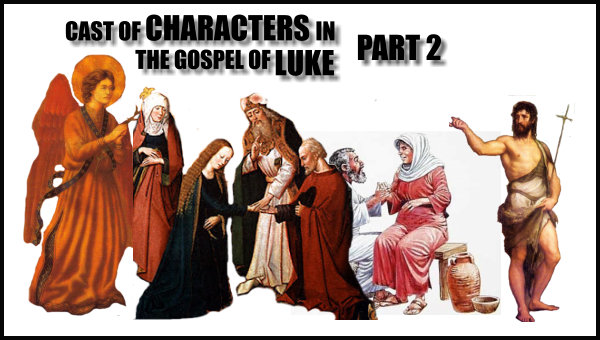By Tyson Thorne

Today we complete our look at the main players in the introduction of Luke’s gospel.
Elizabeth
Elizabeth, on the other hand, didn’t need to be told twice that she was pregnant. She accepted this news at face value and, being a Jewish woman, spread the news far and near. Luke graciously states, “Her neighbors and relatives heard that the Lord had shown her great mercy,” without adding “again, and again and again.”
Mary
Like her cousin Elizabeth, Mary too took the angel’s word. She went to stay with Elizabeth during her pregnancy. Despite having lost Jesus in a caravan when he was 12 she was a very good mother. Imagining that Jesus was with other relatives (the boy was a real people person), she didn’t realize the youngster wasn’t with them until he didn’t show up for dinner. Imagine Mary and Joseph going from tent to tent looking for Jesus. Imagine that parental discussion, “I thought you were watching him!” “This is just great, we’ve lost the Messiah!”
John
After the birth story of John, we don’t hear from him again until he is an adult. We do know that, at least for a time, he lived in the desert. Times being what they were (no Bic disposable razors and no ladies to impress in the desert anyway), it is safe to say John was hygiene-challenged. His favorite meal was locusts and honey. There are two important observations here. First, he probably was not eating insects as they are forbidden by Jewish law. Instead, he probably ate the fruit of the locust tree, called caraway, and it tastes a lot like chocolate. What is more, it grows in a manner that at a distance it does look like locusts on the tree. I imagine chocolate and honey are two great tastes that taste great together. The second is that with the nature of honey being stringy and sticky, I imagine his beard likely took on a hive-like quality.
Jesus
Jesus was, of course, the perfect child. Always obedient, always willing to lend a hand, hardworking and never needing a spanking. Upon occasion he also needed some alone time. Even at the age of 12, he was already familiar with the Torah and the rest of God’s word. We are told the priests were “astounded”, literally out of their minds, by his understanding. He was nearly 30 years old when the Holy Spirit lead him into the desert to prepare him for ministry. He likely left the family business to his brothers for his 40-day trip and then onto a 3-year mission that would end in his death and the salvation of mankind.
These tongue-in-cheek descriptions are not meant to guide our theology, but to stress the importance that when we read these familiar stories we are not reading a work of fiction, but very real people. It is a work of history, and as such the key players in the introduction would have felt the very same fears and joys that we do. If ever you have lost a child in a supermarket or elsewhere, you know the panic that Mary and Joseph felt. If you have ever been caught off guard and needed to spend a night alone in the forest or wilderness, you know how important finding food can be. We need to relate to the people and the circumstances to understand the gospel in a way that is beyond the intellectual and moves us into the realm of experience. Luke penned this work to communicate a history that we all can relate to and believe in.
|
|